Tillandsia recurvispica
Click thumbnails for full size, scaled to a new window.
Tillandsia recurvispica
Scented.
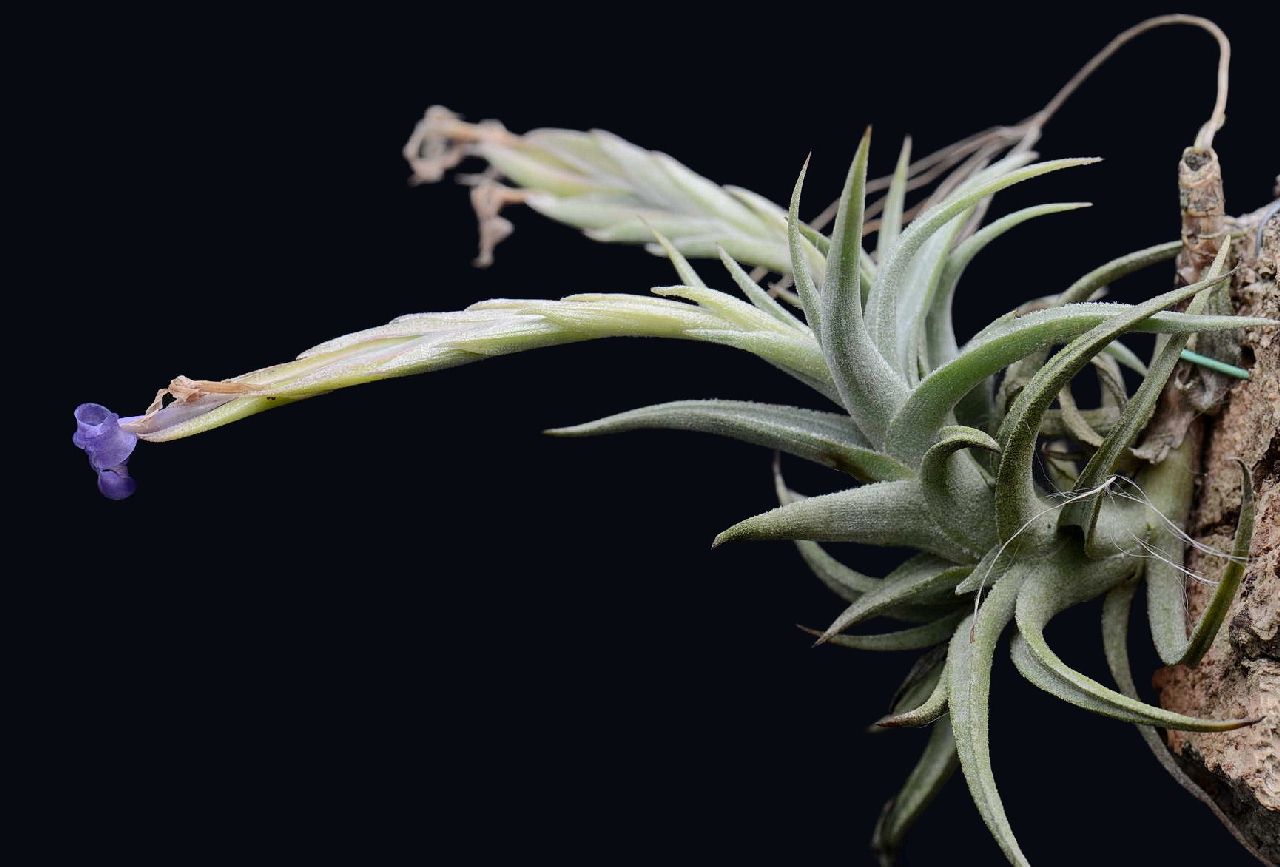

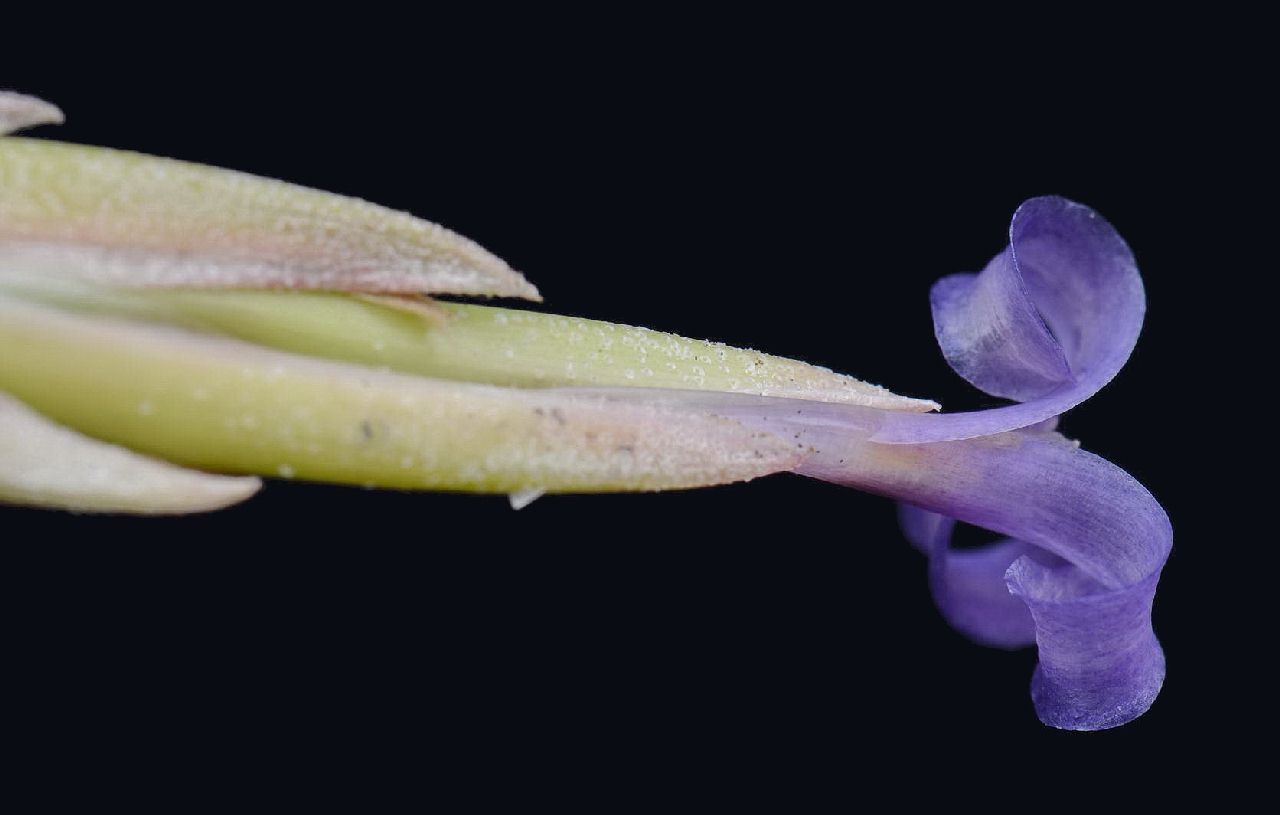
| Peter Tristram 11/14. From Lotte H. |
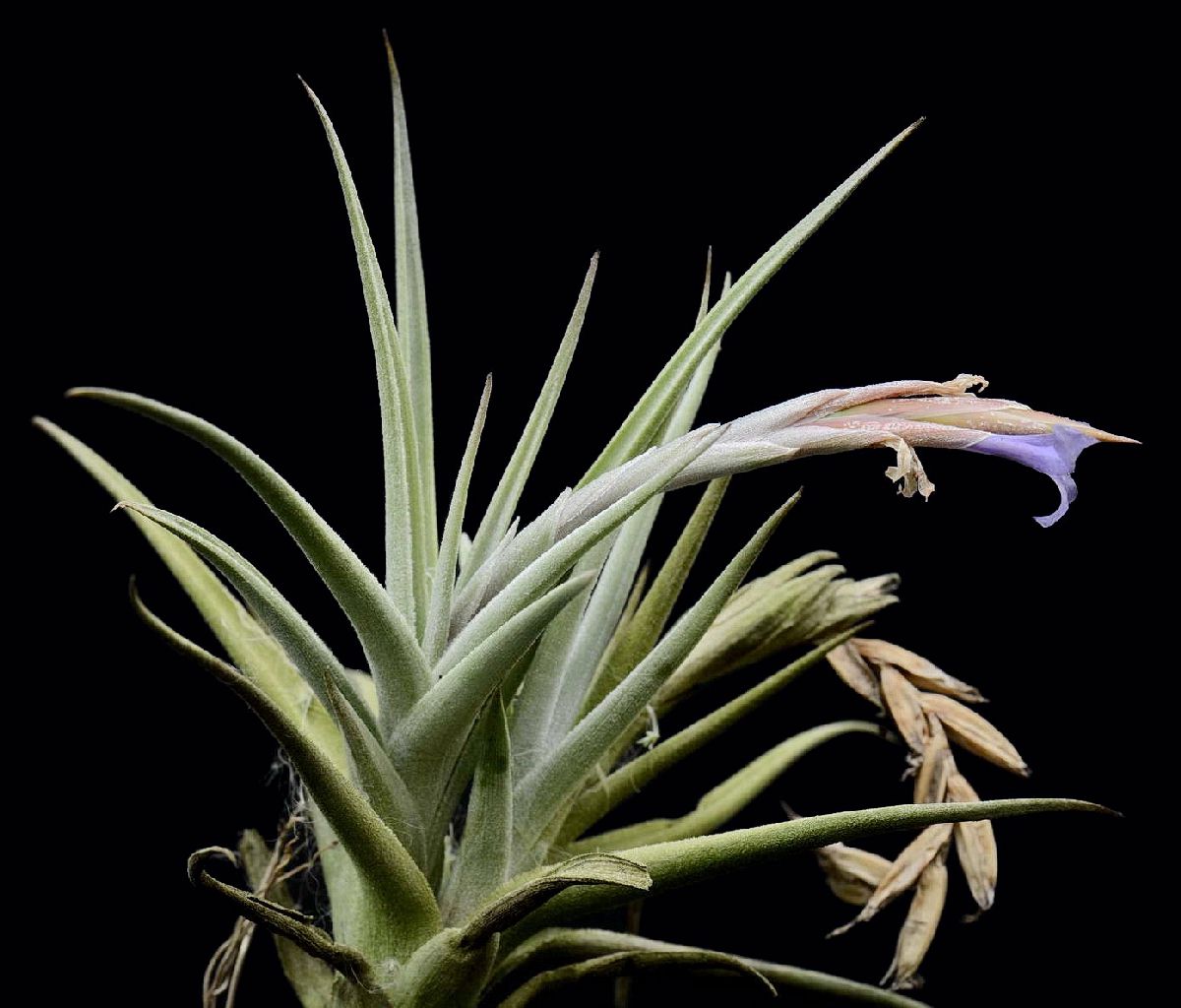

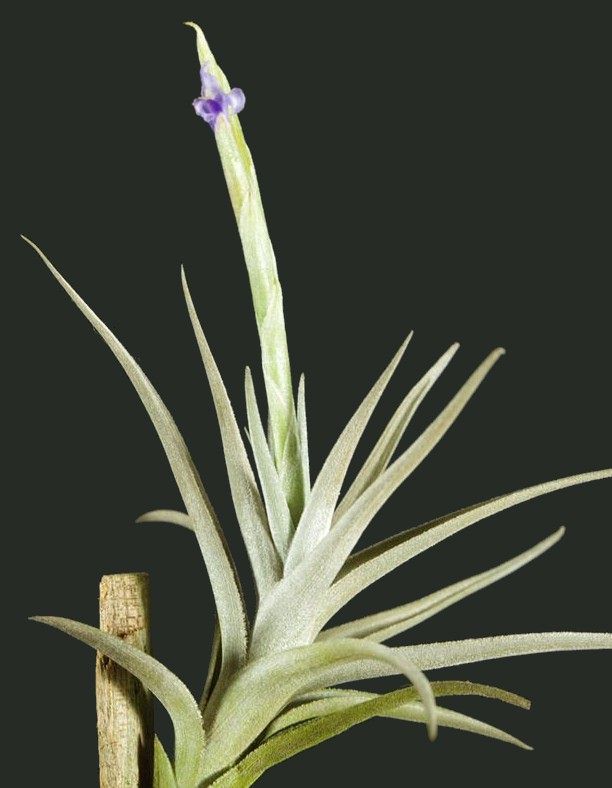
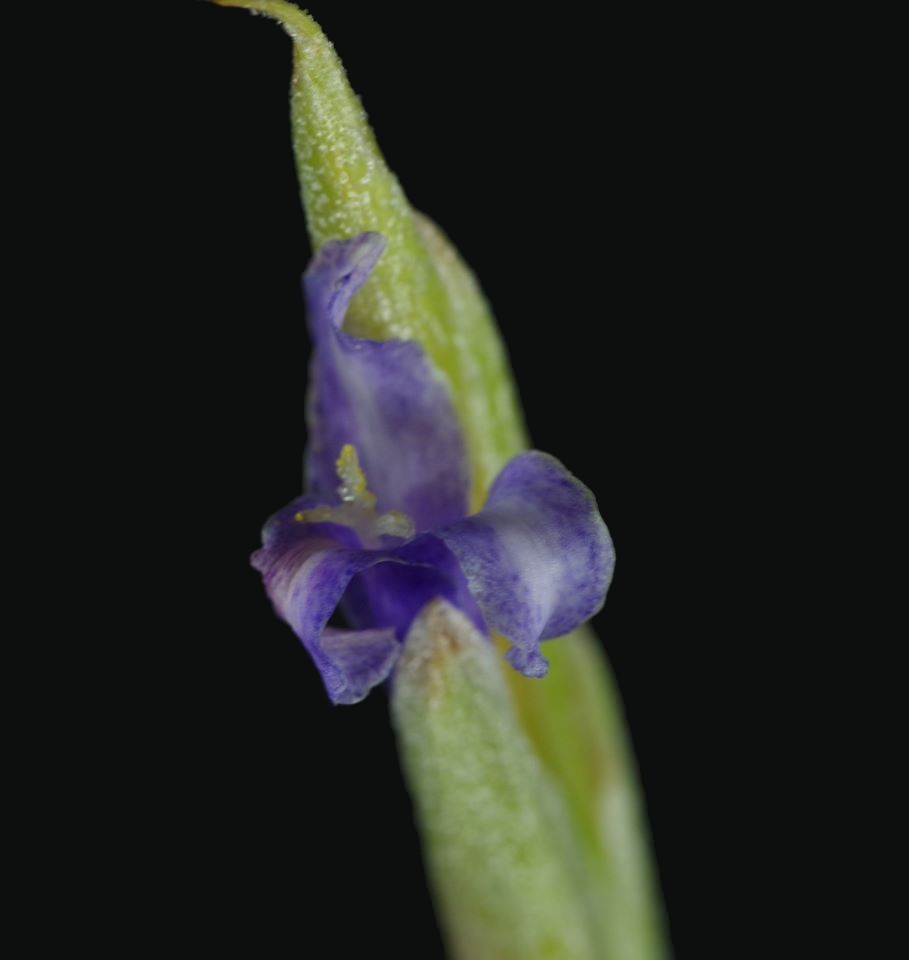
| Peter Tristram 11/14. From Holm |
Greg Aizlewood 03/20 |
Peter Tristram ... "A couple of years ago I managed to purchase some new species from Lotte, one being the recently described T. recurvispica, which was featured in Die Bromelie. I nearly missed its blooming as it was in a rather hidden but bright and airy spot. It is so similar to another interesting one that I conjectured could be this species, that I got from Holm. Chris Larson has posted pics of it too. Both are in the attached photos. The Holm plant is larger though but more in keeping with the description. It is also possible that the labels got mixed up in quarantine."
Peter Tristram ... "A nice little plant flowering at the moment. The disc says closely related to T. gerdae & T. boliviensis."
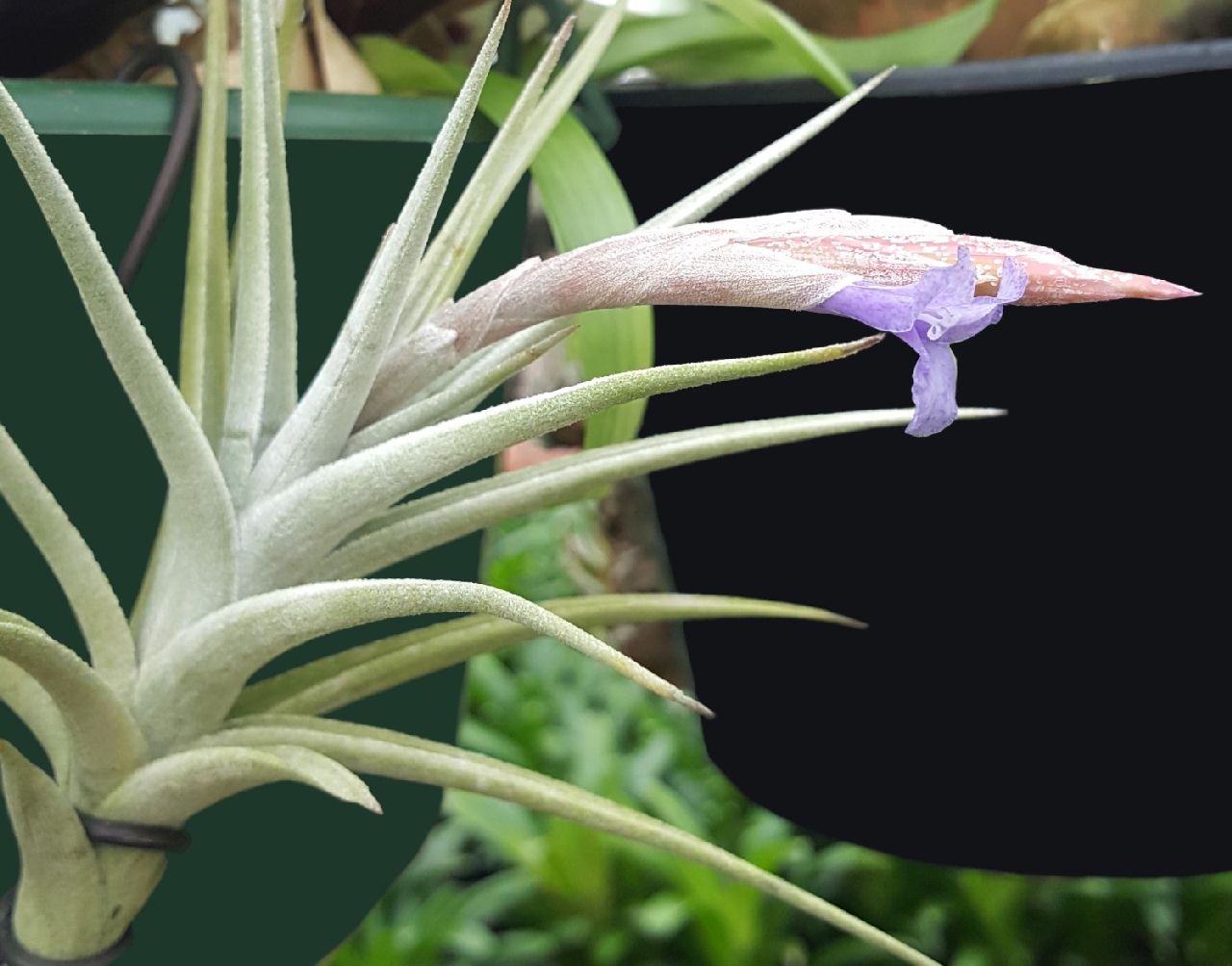
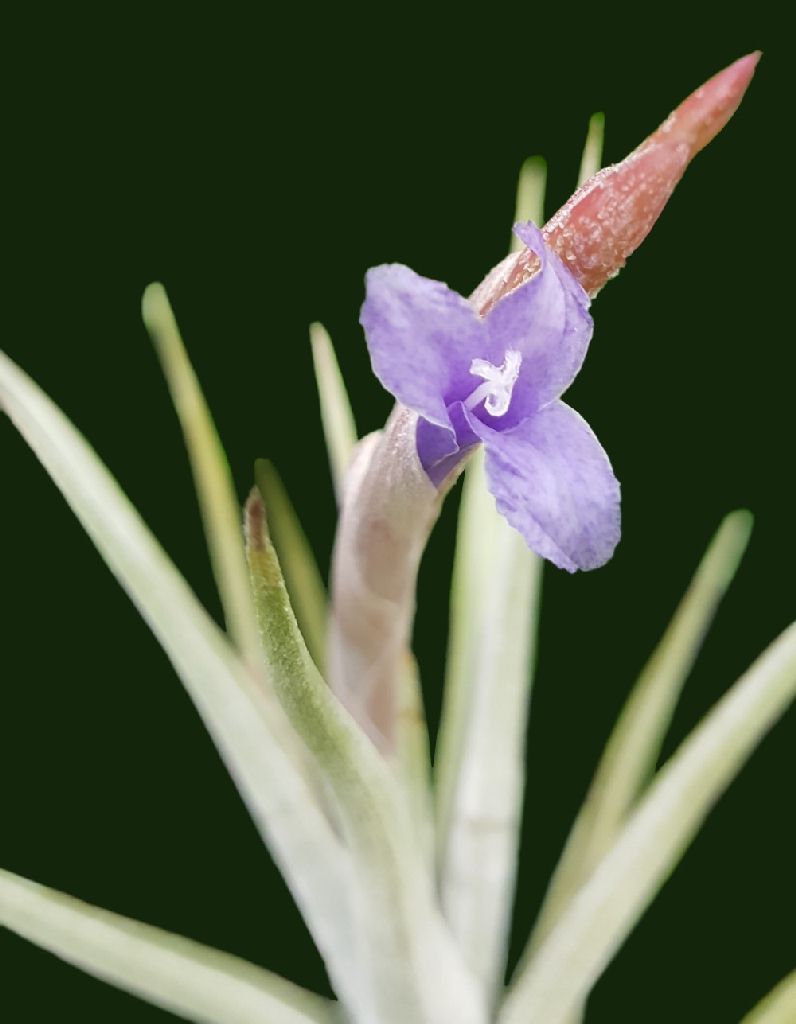
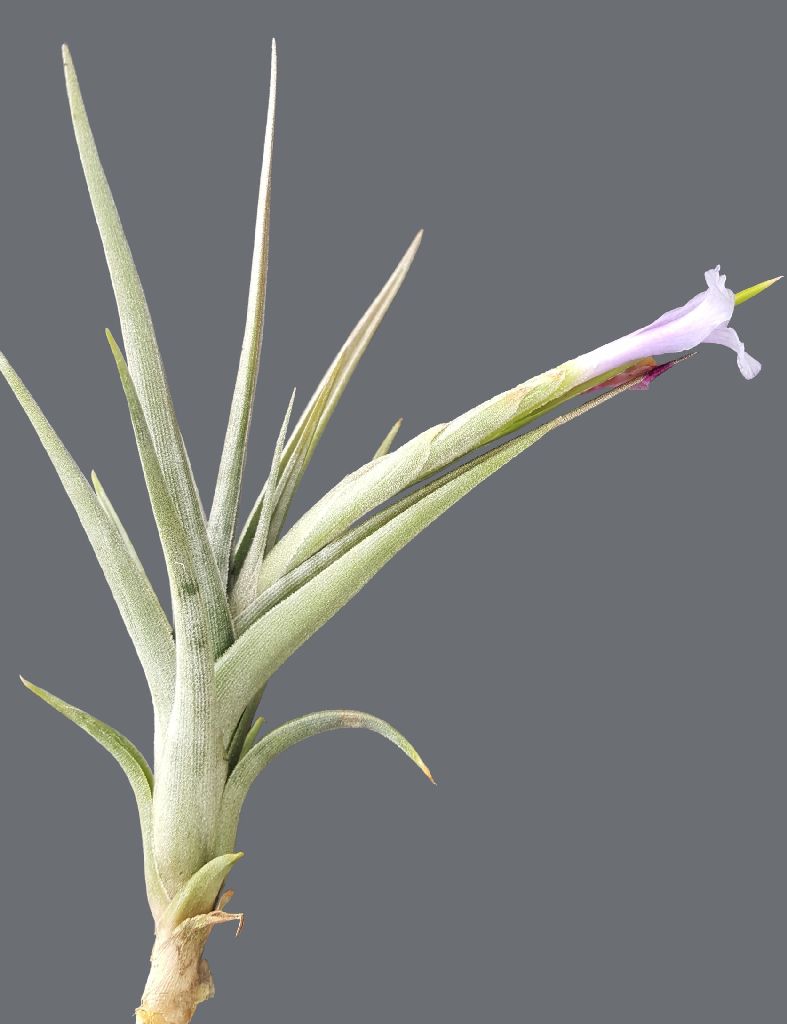
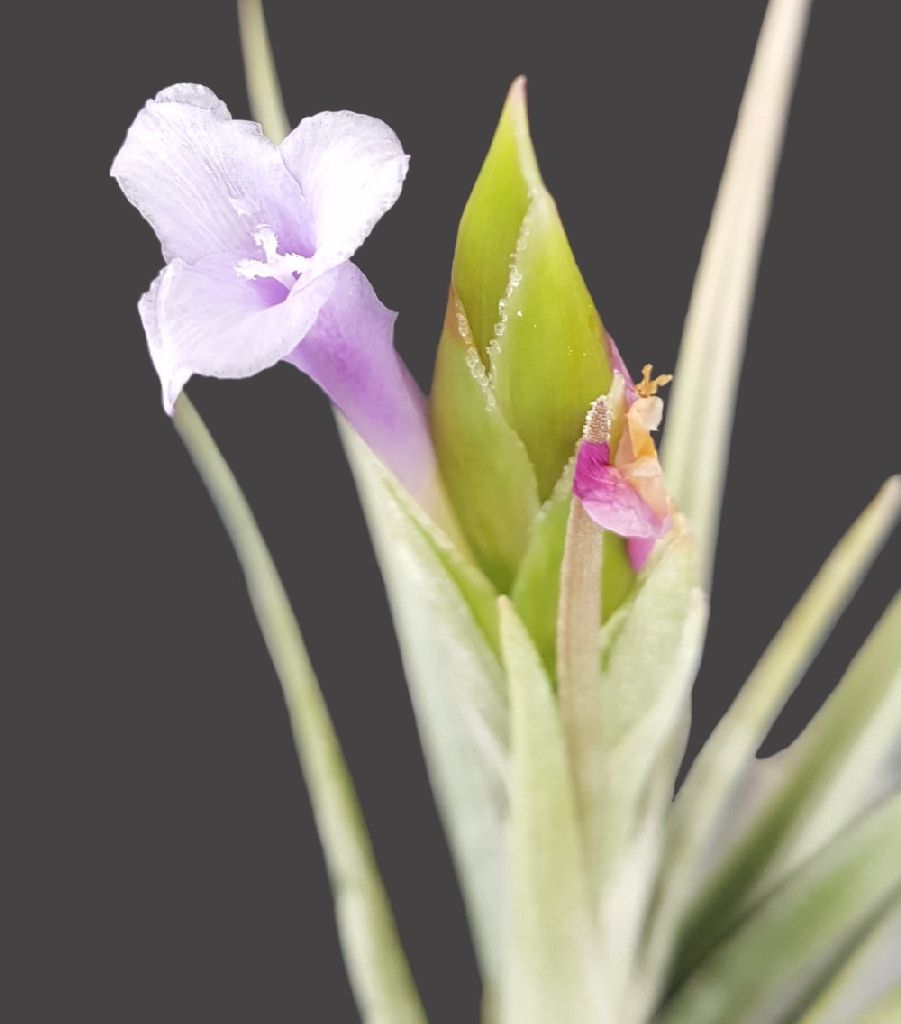
| Chris Larson 10/18 originaly as "cf. cochabambae" |
Chriis Larson ... "I have a plant as T. cf cochabambae EBP52002 so a Renate Ehlers collection number on it. Looks awfully like recurvispica which I recently posted?
So I got out the description. Looked at the differential on the disc luckily there was one.
(T. recurvispica) Differs from T. cochabambae in :
- Plant larger
- Leaves nerved
- Leaf margins and bract margins have long narrow scales
- Inflorescence horizontal, recurved
- Flower at anthesis erect
- Flower spikes appear channelled
- Rhachis 4 sided with excavated wings
- Scape to 15mm long
- Flower bracts wide, curved, white membranous edged
- Flowers longer
- Sepals leathery, naked, carinate
- Petals more narrow, always blue - violet
With the help of the glossary of plant terms on the disc it was pretty simple to work out.
The differentials posted on the disc (where they are relevant) are a good way of getting into the basics of using the info. Im a bit lazy in using dichotomous keys but simply enquiring, looking for differentials, and finding if they fit is (often) not so hard. Try it sometime.
Those that use experts (and some call me that, lol) to say which it is, dont know if the experts have done the basic enquiry, comparing possibilities or even knowing whether other possibilities exist. As I said, Im not one for keying things out, but a basic check is relatively easy and becomes easier the more you do it. One day I may even do dichotomous keys!"

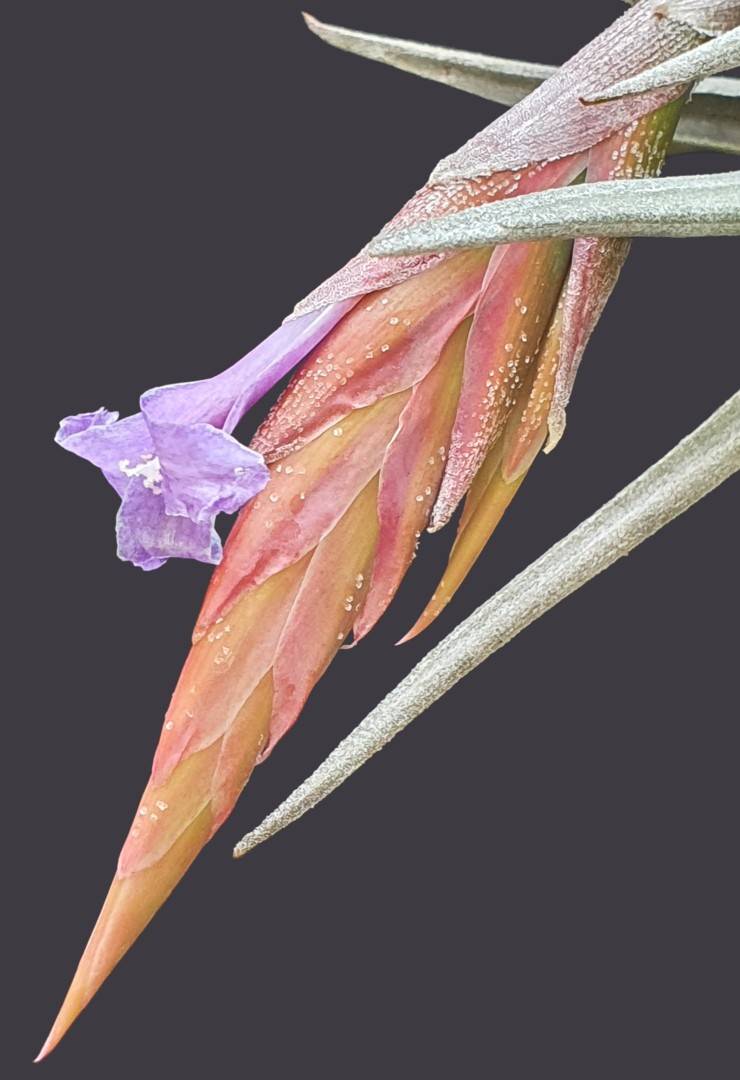
Tillandsia recurvispica. Hromadnik & Schneider. Die Bromelie 1/1987 p1-4
Plant in small groups on rocks, flowering 15 20cm long, few leaved, polystichous, with short, sturdy, leafy, ascenging stem.
Leaf narrow triangular, 8 12cm long, spreading to reflexed, most of the inflorescence exceeds the leaves, to 15cm wide, making a loose rosette.
Leaf sheath indistinct, triangular, at base to 30mm wide, 15 20mm long, leathery, densely scaled on the outside with the blade, inside naked, polished, light green, the blades strongly nerved.
Leaf blade narrow triangular, clearly seen, ca awllike tapering towards the tip, 17mm wide next to sheath, involute, channelled mostly to the tip, the bottom section adjacent to the stem, upper half slightly bent outwards, both sides dense appressed grey white lepidote, clearly striped with long nerves, leaf edge dense with long white ciliate hair.
Scape hardly longer than 15mm, 2mm thick, naked, entirely masked by the few scape bracts.
Scape bracts lower ones subfoliate, the top ones thin membranous, longish oval, clearly tipped, pale green, reddish overlay, 35mm long, 13mm wide, the outside with thick appressed scales, the inside naked, polished, bare, edge clearly with fine long twisted scales.
Inflorescence simple, overhanging the leaves, long oval, tipped, robustly complanate, arising as a horizontal sword, then inclined, robustly reflexed, 4 7cm long, 15mm wide, 5 7 flowered, the tips of the flower bracts on the top side bend downwards and in pairs the flowers seem bent over towards an asymmetrical and depressed rhachis, giving the spike a smooth groove at anthesis.
Rhachis robust, reflexed, green, naked, mildly geniculate, in cross section 4 angled, ca 4mm thick, 2mm wide, adjacent flower dug into the side, edges prominent, internodes 4 5mm apart.
Flower bract densely imbricate, entirely masks the rhachis, the lower ones scarcely tipped, the upper clearly keeled, thick leathery, membranous edge, whitish edge, oval and clearly tipped, at base 7mm and at widest part 11mm wide, 30mm long, overhanging the sepals, bent with a smooth keel, clearly double keeled at base, on the inside naked, clearly parallel nerved, on the outside at anthesis green with reddish overlay, later straw coloured, nerved, scales persistent, scales on the inside bract densely arranged and evenly distributed but for the opposite outside bract scales are sparing, irregular, and distributed near the middle.
Flower stemmed, pedicel 4mm thick and high, clearly joined to the ovary, to 46mm long, firmly appressed to the rhachis and the side dented, not scented.
Sepal triangular, tipped, to 20mm long, 6mm wide, base green, otherwise pale reddish, leathery, polished, naked, when in dry condition nerved, the back with green thickened keel.
Petal thin tongue shaped, tipped, 40mm long, 3mm wide, erect, the tips reflexed, the top half strong blue- violet, the base white.
Stamens included in the flower tube. Filament ribbon like, straight , at the base 0.5mm wide, 18mm long.Anther gold, 9mm long 1mm wide. Style 30mm long, fan shaped, white, light violet towards the top.
Stigma lobes white, equally as long or shorter than the petals.
Ovary oval in cross section, almost triangular, 7mm high, 4mm wide.
Type locality Bolivia, Prov. of Cochambamba. To the west of Quillacollo, 2500m, on vertical walls in the river valley of Rio Caine with T. lorentziana, T. duratii, T. hirta, T. caliginosa, T. pedicellata, and T. capillaris.
Holotype leg. H & L Hromadnik, July 1977, HR 3007 ( WU )
Differs from T. cochambae in
1. Plant larger
2. Leaves nerved
3. Leaf margins and bract margins have long narrow scales
4. Inflorescence horizontal, recurved
5. Flower at anthesis erect
6. Flower spikes appear channelled
7. Rhachis 4 sided with excavated wings
8. Scape to 15mm long
9. Flower bracts wide, curved, white membranous edged
10. Flowers longer
11. Sepals leathery, naked, carinate
12. Petals more narrow, always blue - violet
13. Style as long as petals
14. Filaments straight not plicate
Differs from T. xiphioides v. tafiensis in
1. Scape bracts smaller
2. Flower bracts smaller, lepidote, and double keeled at base.
3. Flower smaller, not scented, with distinct pedicel
4. Sepals smaller
5. Petals narrow lingulate
6. Stamens shorter than the style
Differs from T. boliviensis in
1. Plant smaller
2. Leaves rolled inwards, rigid, appressed lepidote, nerved
3. Scape very short, 2mm thick
4. Scape bracts membranous (without blade)
5. Inflorescence horizontal, recurved, flowers erect.
6. Spike wide, complanate, internodes 4-5mm long
7. Rhachis hidden
8. Floral bracts keeled, oval, smaller
9. Flower is longer with distinctly shorter pedical
10. Sepals very acute, shorter, very keeled, leathery, glabrous
11. Petals longer, narrower, blue violet
12. Stigma lobes very wide apart
Updated 20/02/23












